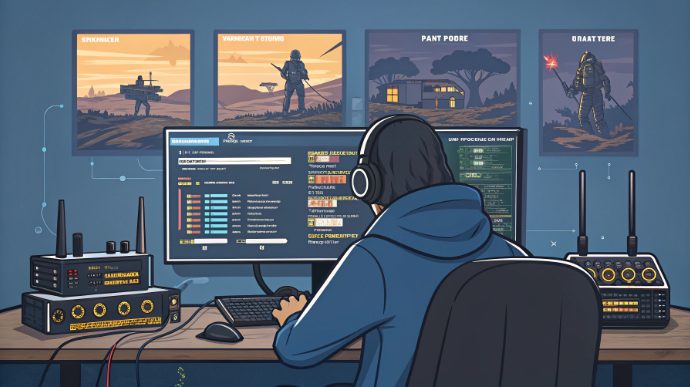Playing PUBG on US servers can be an extraordinary experience—until you encounter server lag or persistent frame drops. These issues, often stemming from network inefficiencies or hardware limitations, can make even the most exciting matches frustrating. This guide provides a deep dive into diagnosing and resolving these problems to ensure a smooth gaming experience. Whether you’re hosting on dedicated servers or leveraging colocation services, optimizing your setup is key.
What Are PUBG Server Lag and Frame Drops?
Understanding the root cause of your gaming issues begins with distinguishing between server lag and frame drops:
- Server Lag: This occurs when there’s a delay between your actions and the server’s response. Symptoms include teleporting characters, delayed weapon firing, and unresponsive gameplay.
- Frame Drops: This refers to a sudden decrease in the frame rate, often caused by hardware limitations or poor game optimization. It results in choppy visuals and stuttering gameplay.
Why Do US Servers Experience Lag and Frame Drops?
Several factors contribute to these issues, particularly on US servers, where player distribution and network traffic are diverse. Key causes include:
- Network Latency: High ping due to long server distances or suboptimal routing.
- Bandwidth Issues: Insufficient bandwidth during peak gaming hours.
- Server Overload: Heavy player activity on certain regions or data centers.
- Hardware Bottlenecks: Outdated GPUs, insufficient RAM, or mechanical drives can hinder performance.
How to Troubleshoot PUBG Server Lag
Resolving server lag requires a systematic approach. Follow these steps to identify and mitigate network-related problems:
- Test Your Connection: Use speed testing tools to measure your latency, upload, and download speeds. Aim for a ping below 50ms for optimal gaming.
- Choose the Best Server: Manually select a server with the lowest ping. Avoid auto-selection options that might route you inefficiently.
- Optimize Your Network:
- Use a wired Ethernet connection instead of Wi-Fi.
- Restart your router and modem to clear potential congestion.
- Disable bandwidth-heavy applications running in the background.
- Consider VPN Usage: A gaming-specific VPN can help reduce latency by optimizing routing paths to the server.
How to Fix Frame Drops
Frame drops can ruin the visual fluidity of PUBG. Address these issues with the following measures:
- Adjust Game Settings: Lower in-game graphics settings like shadows, anti-aliasing, and texture quality. This can significantly boost FPS.
- Update Drivers: Ensure your graphics card drivers are up-to-date. Manufacturers frequently release updates to improve performance.
- Upgrade Hardware:
- Switch to an SSD for faster load times.
- Upgrade to a GPU with higher VRAM for smoother rendering.
- Add more RAM to handle resource-intensive games.
- Close Background Applications: Terminate unnecessary programs to free up system resources for gaming.
Preventative Measures for Future Optimization
Avoid recurring lag and frame drops by implementing these proactive strategies:
- Regularly restart and update your networking equipment.
- Keep your system drivers and game patches up-to-date.
- Monitor server performance and switch to less crowded data centers when possible.
- Invest in high-quality hosting or colocation services for the most stable gaming environment.
Conclusion
By addressing server lag and frame drops, you can transform your PUBG experience on US servers. Optimization, whether through hosting solutions or hardware upgrades, is vital for maintaining competitive gameplay. Take the time to follow these troubleshooting steps, and you’ll enjoy smoother matches and better performance.
FAQ
- Q: Why is my ping high even with a fast connection?
A: Routing inefficiencies or server overload could be the cause. - Q: Can a VPN really reduce latency?
A: Yes, if it optimizes routing paths effectively. - Q: How do I identify server-side issues?
A: Use server monitoring tools to check for downtime or overload.


